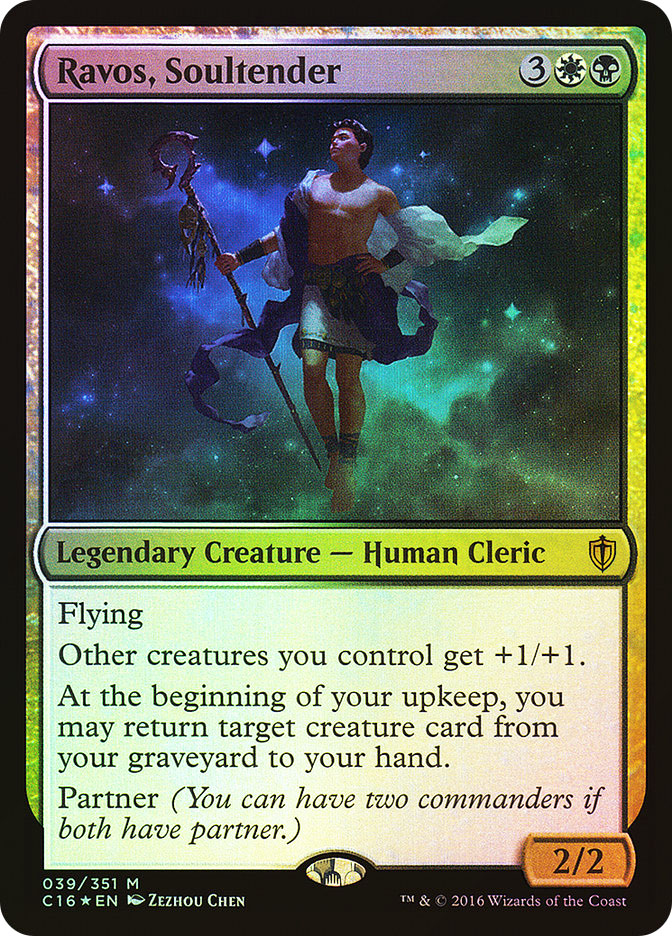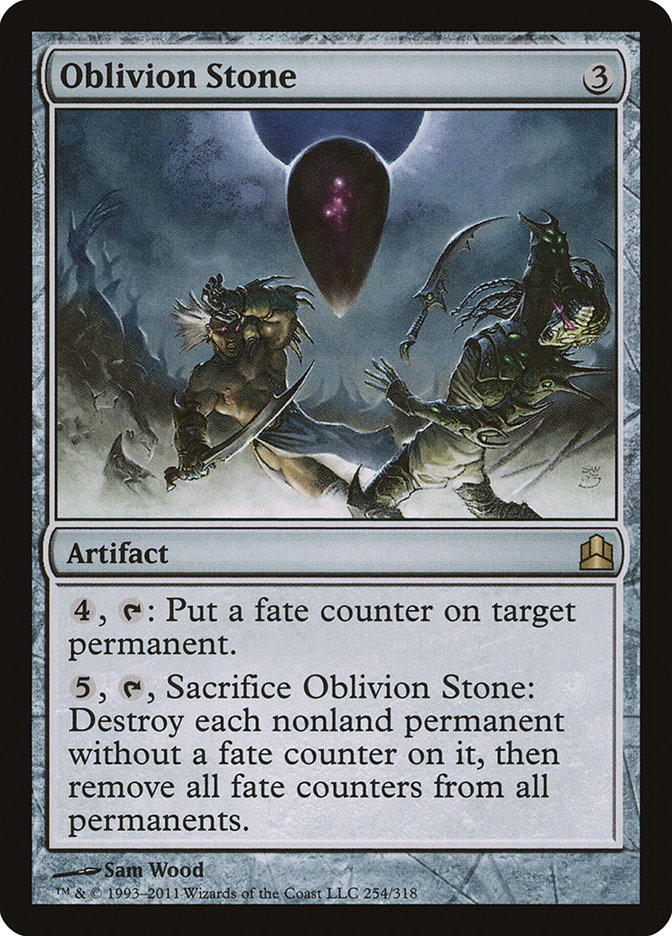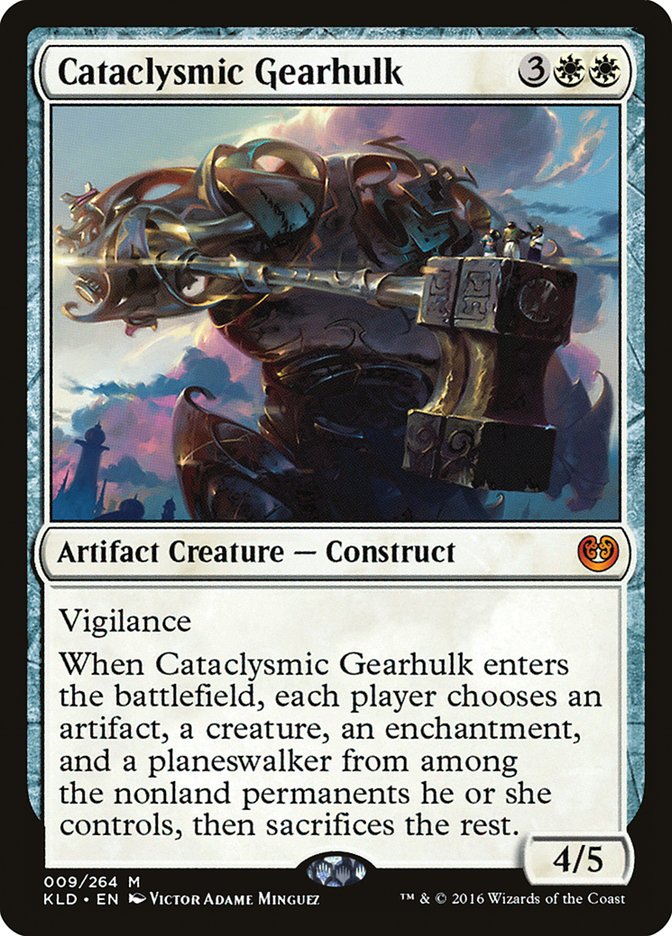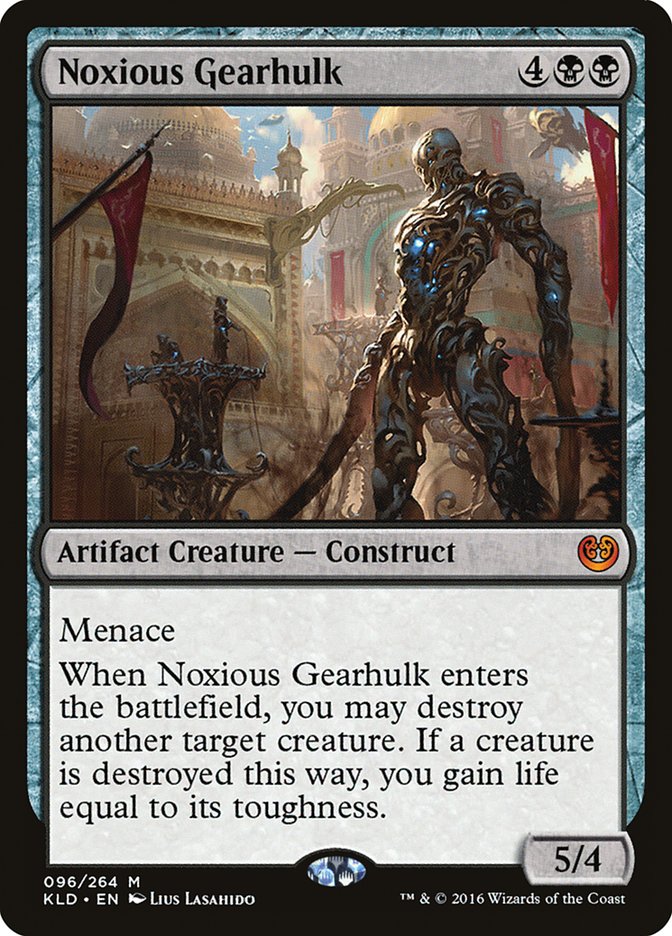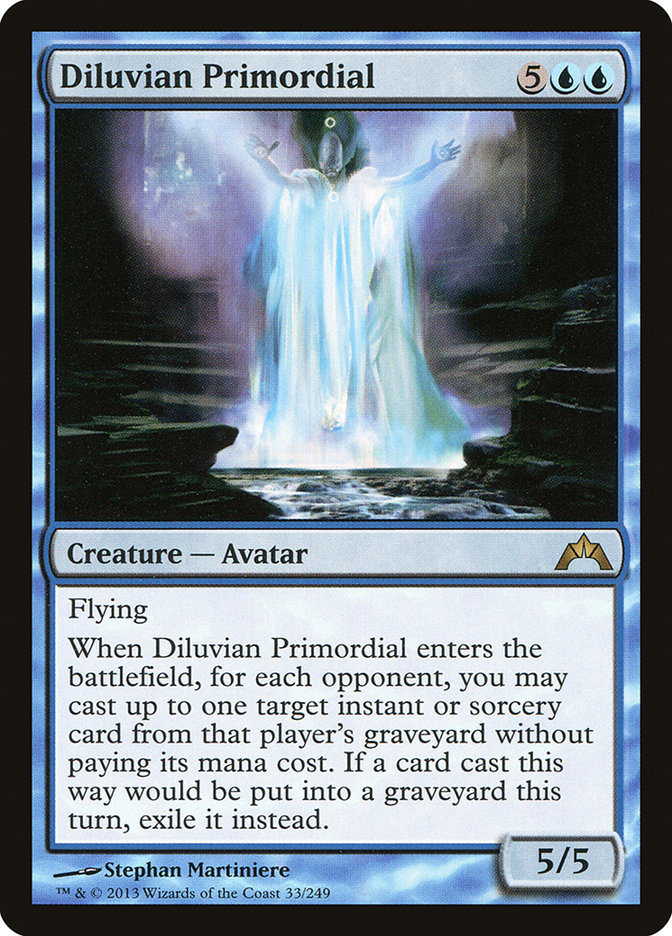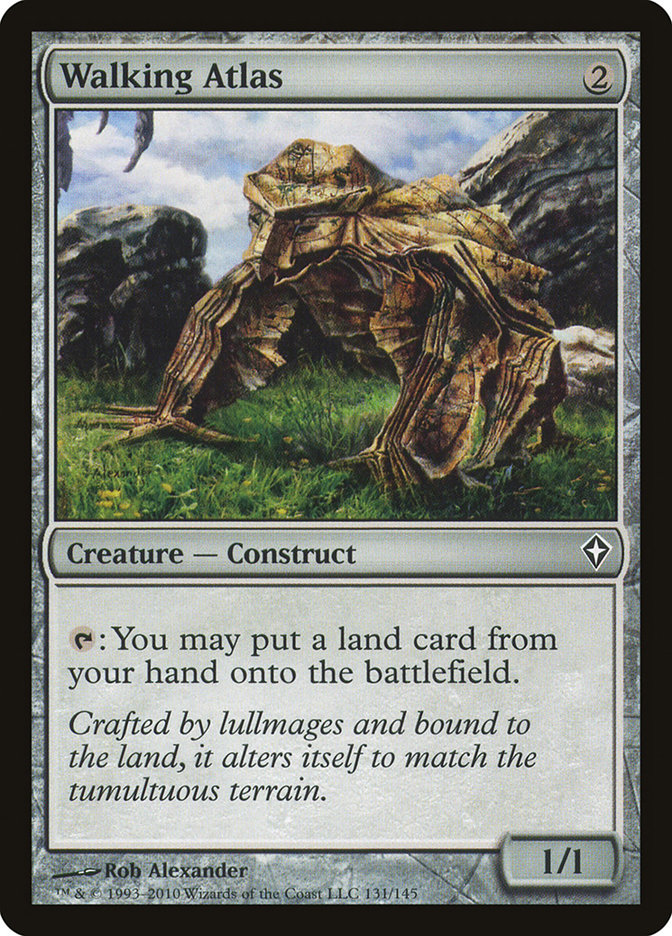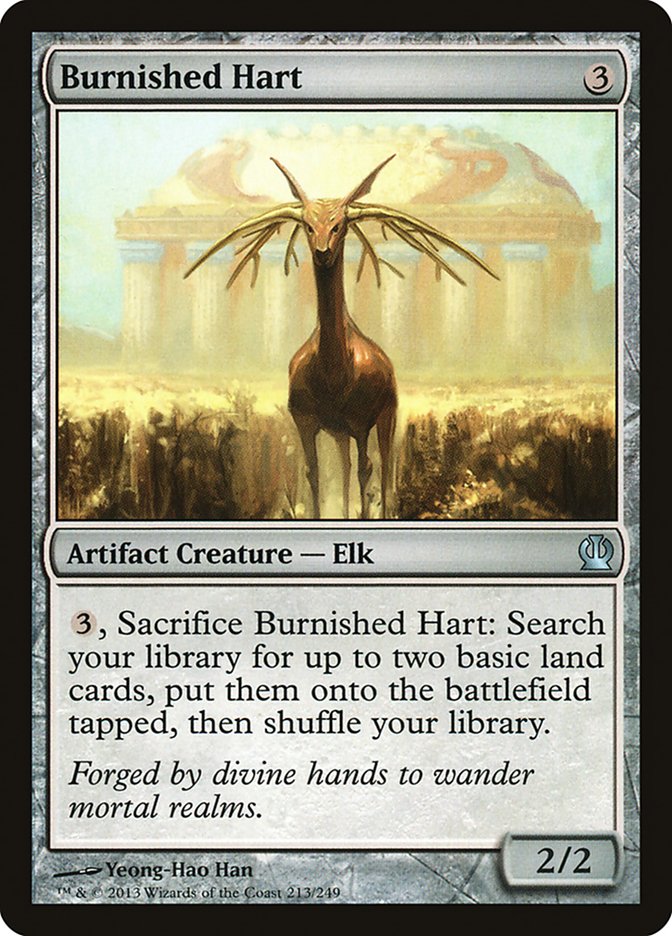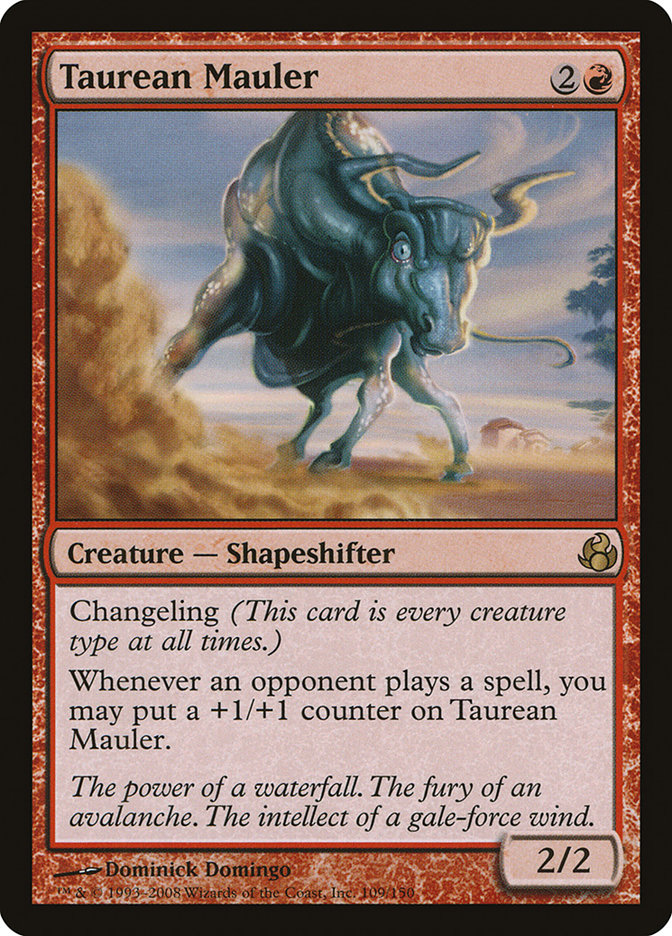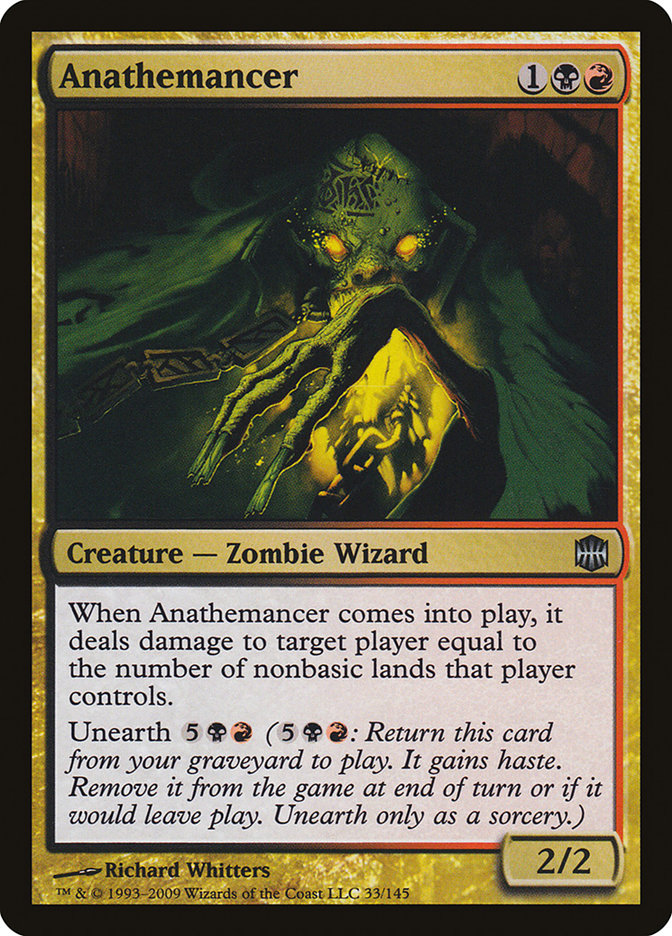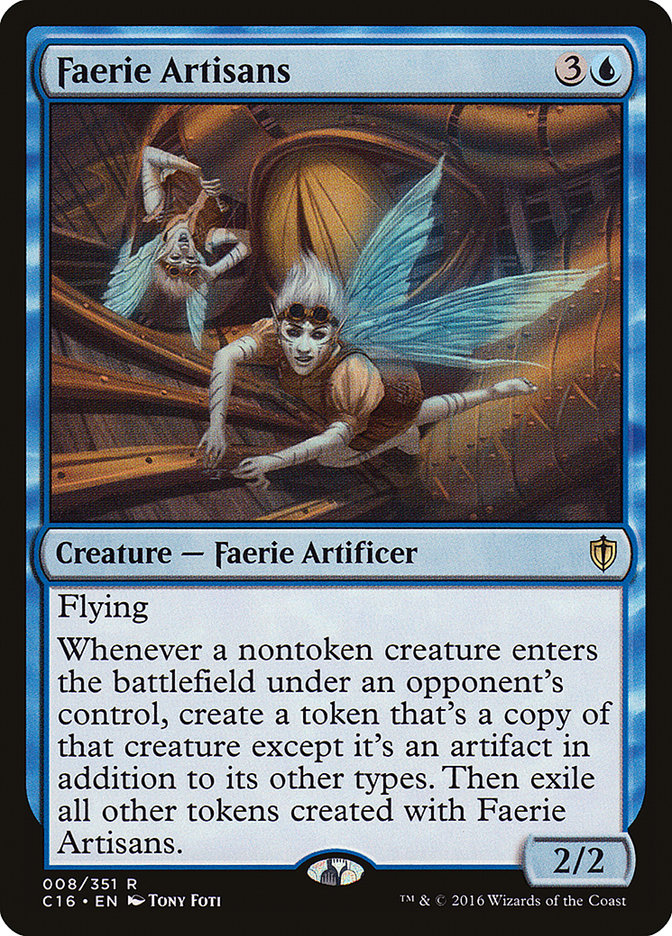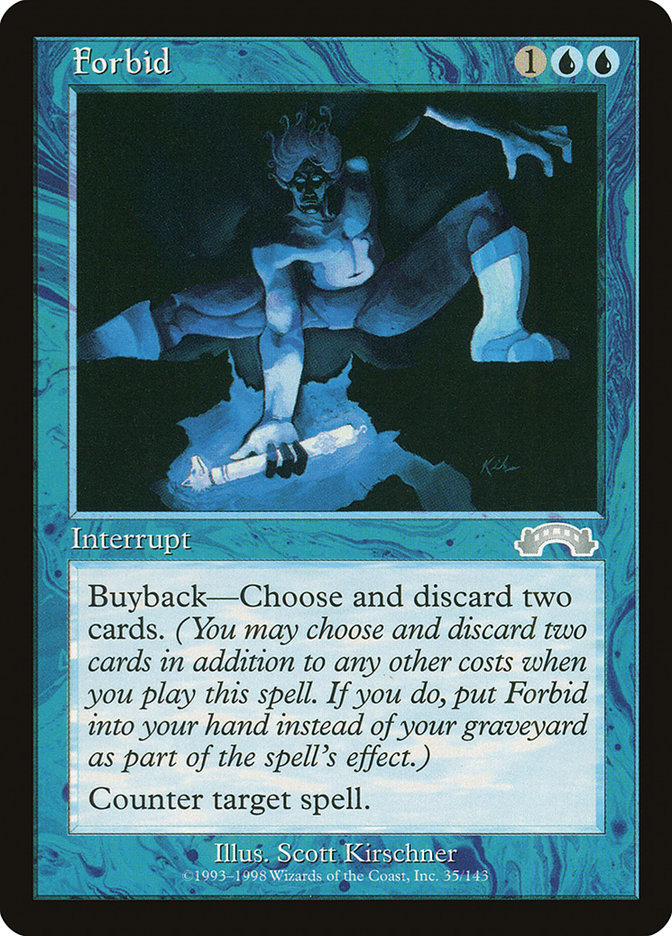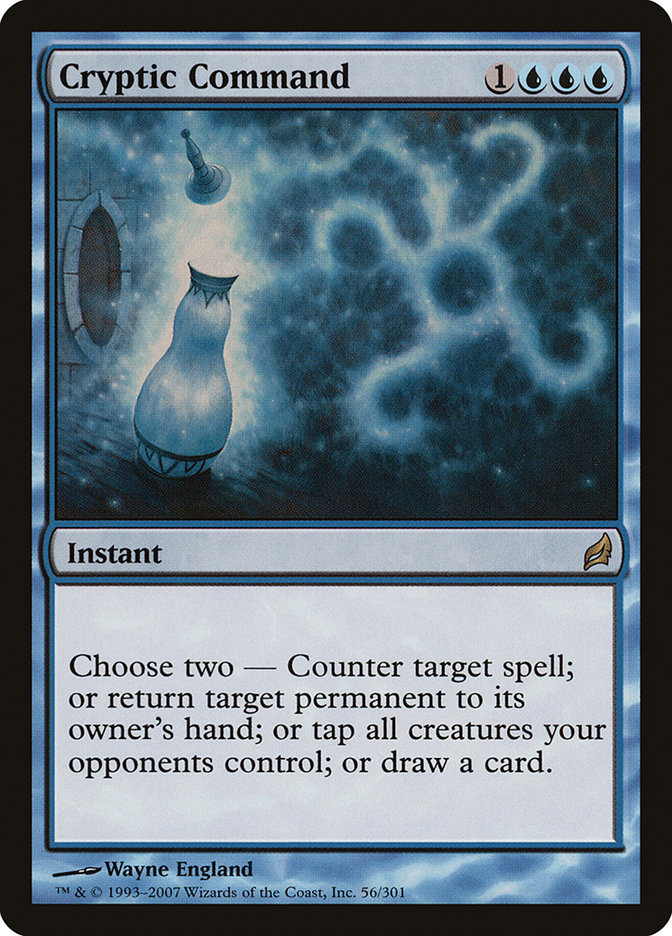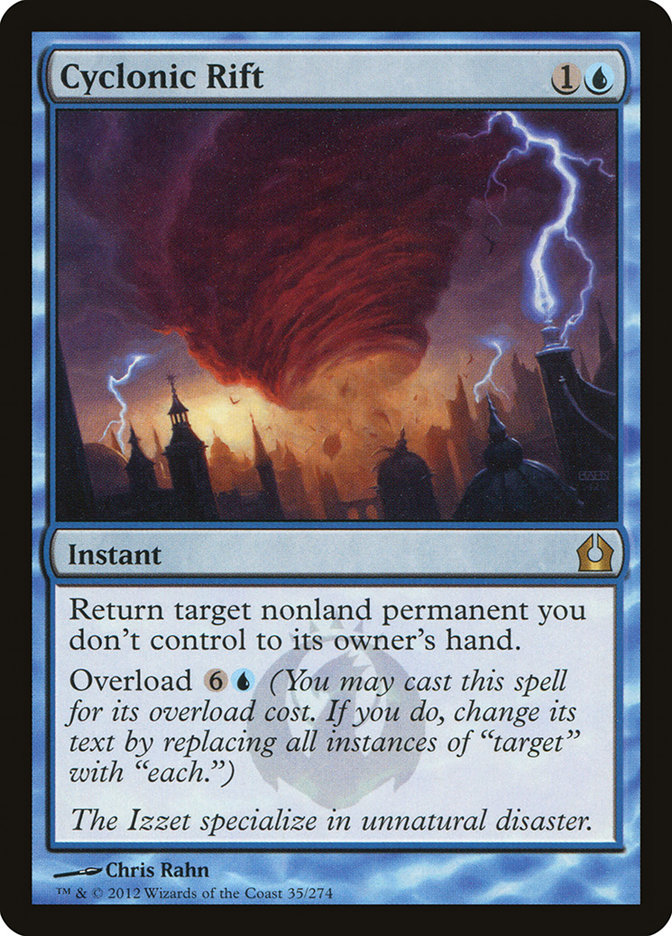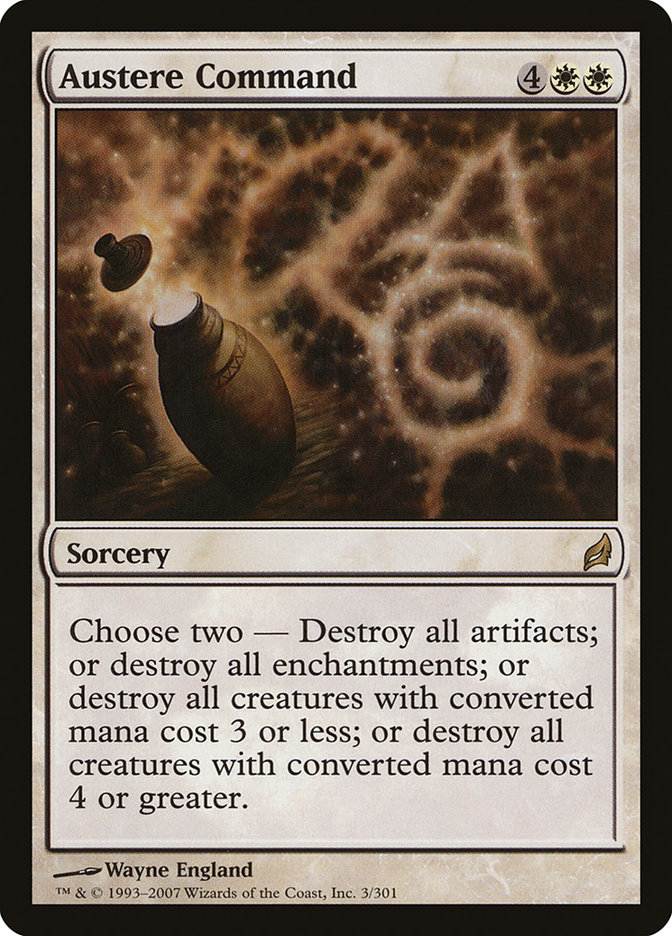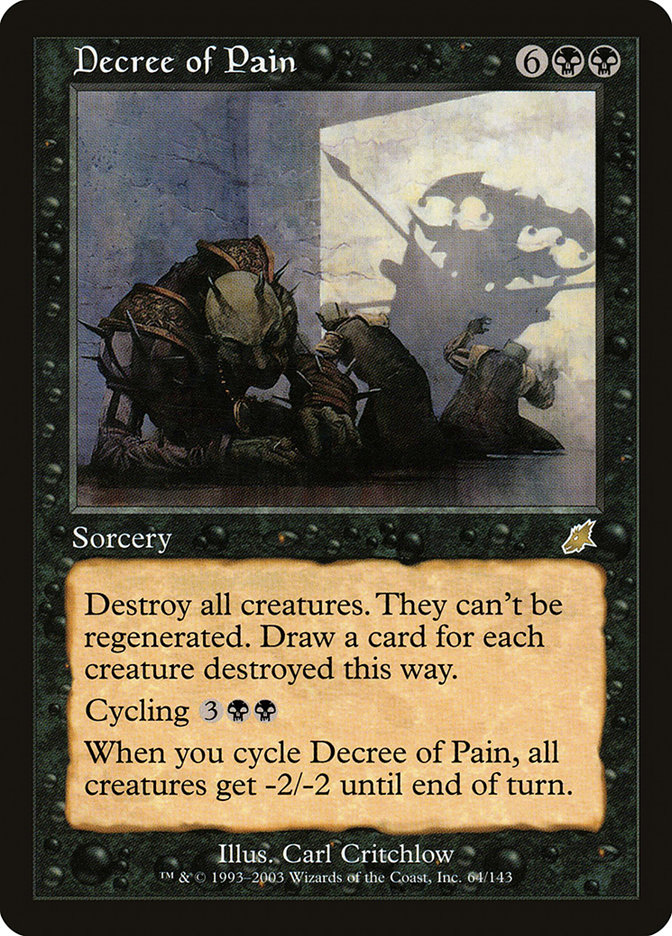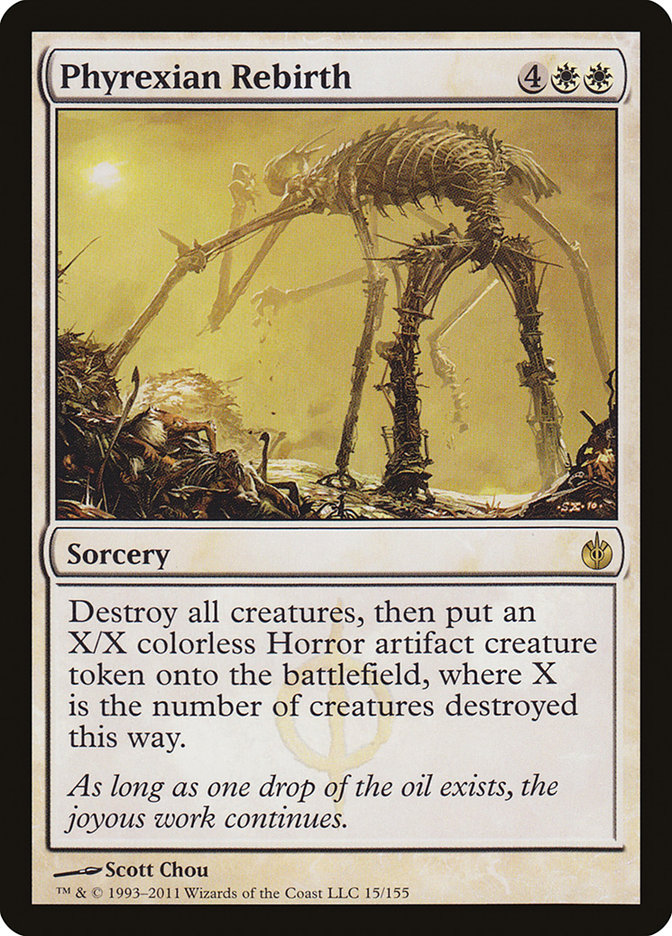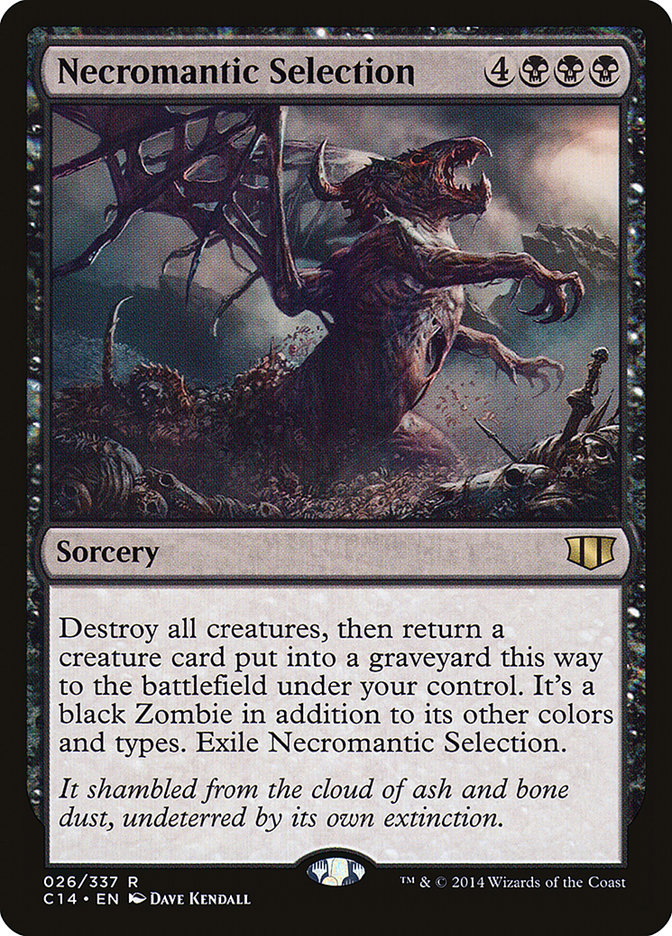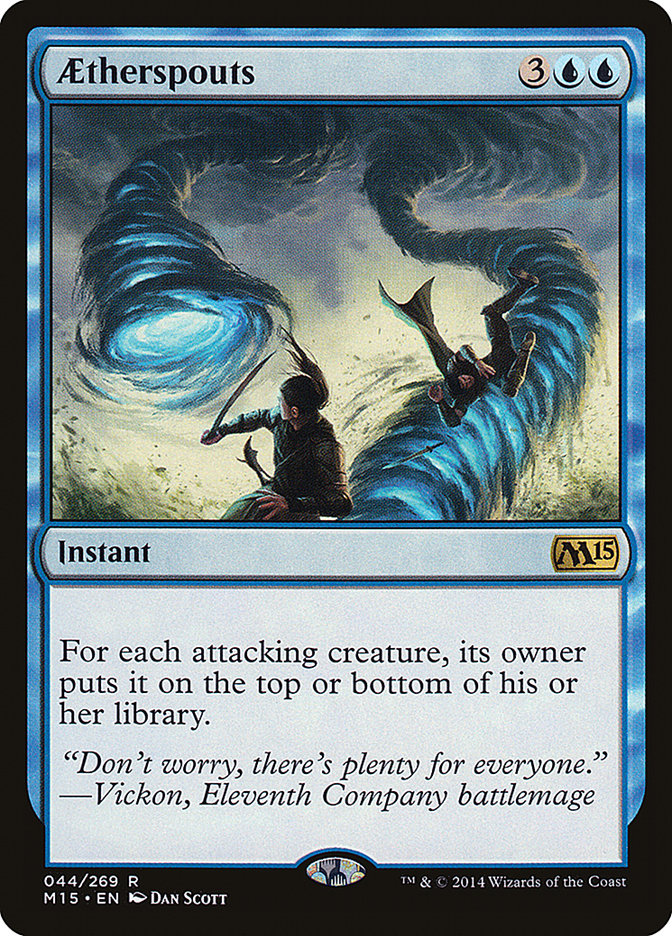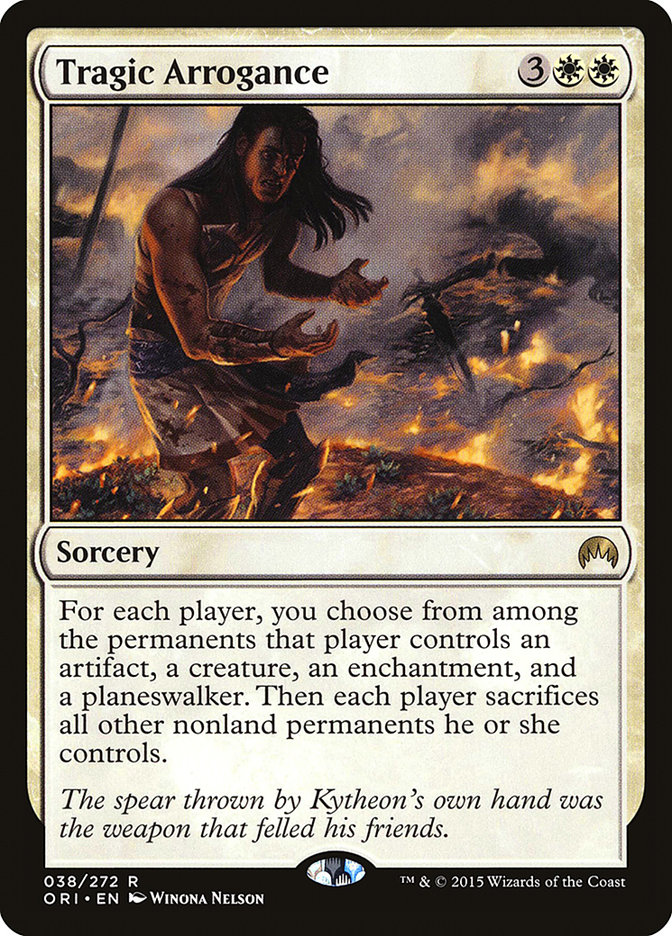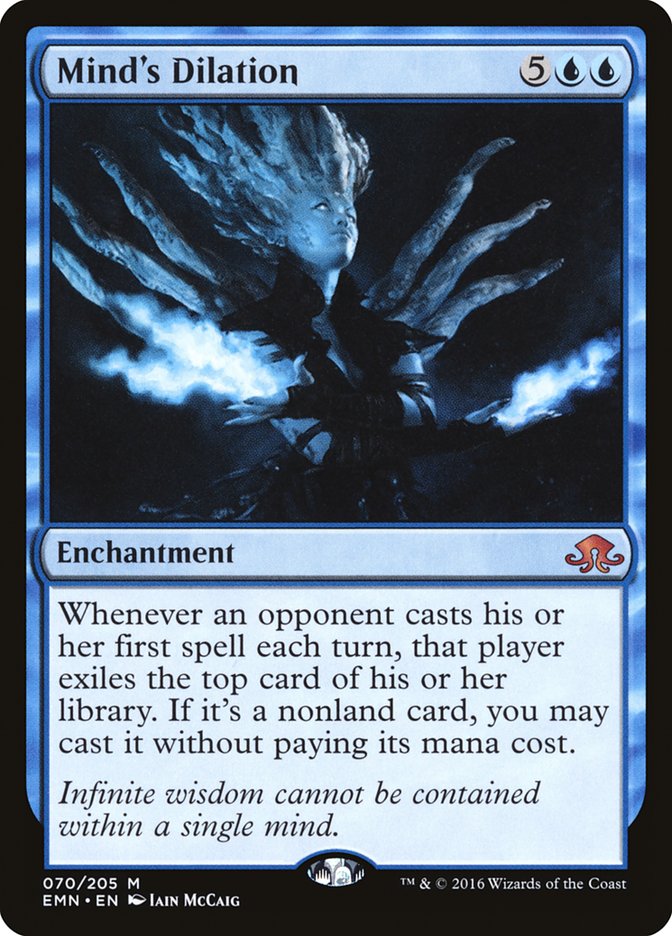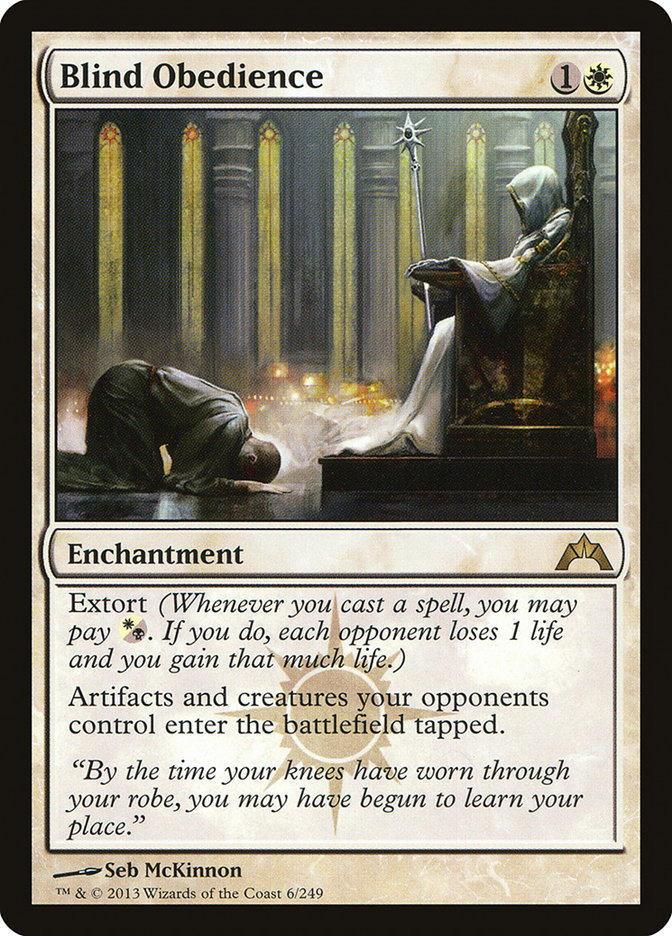Magic is a complicated game, and that’s one of the things that keeps it interesting – there are just so many choices available to us. The Partner mechanic is a great example of that complexity: with just fifteen cards, we have some 200 or so possible combinations to try out, ranging from two-color to four-color builds all across the chromatic spectrum. It’s true that not each and every single one of them makes a compelling argument, but for at least for the enemy-colored pairings, if you don’t like one particular legendary creature, you at least have a second option to try out. There are also multiple ways you can assemble two-color commanders to build any four-color combination, so chasing whatever you find interesting about one of them will eventually give you something to build around with one of the others.
I don’t keep a lot of decks built at any given moment. Since I have less play-time available to me than I want, it doesn’t make sense to have five or ten decks built at once. I can always come back to an old favorite – I’ve revisited my mono-black control build centered around Ob Nixilis, the Fallen a few times now and sometimes I just feel like beating down with Godo, Bandit Warlord again. My recent build had been attempting to play up the theme “card count matters” with Gwendolyn di Corci stripping opponents of resources along the way to eventual victory, but I sadly found this focus felt too mechanical and was no fun for anyone, even though it wasn’t that Spike-y of a deck. Reducing an opponent down to zero options is a reliable way to conquer them, but it’s apparently not a fun experience as one’s primary objective.
Seeking something new, I decided to step outside of my comfort range and assemble the Gitrog Combo deck I’d mentioned a few weeks ago to see how nasty it is in actual practice… and knew I wanted to try a Partner deck out, with the caveat that I didn’t want another deck with both green and black cards in it, so my options were going to be limited to either the not-green or the not-black builds. There are only fifteen options to choose from, but this really narrowed things down – first I excluded the two B/G legendary creatures, since neither of them could be at the helm of my deck, and then I separated the commanders into green options and black options to see if I found any of them compelling.

If we’re being really honest, neither Sidar nor Kydele catches my interest – building a “small creatures matter” theme into a Commander deck sounds like an easy way to get outclassed very quickly, and I want more out of my Commander than just an overglorified Elf. Thrasios at least has potential as a card-advantage commander, and Tana could get out of hand with the right pump tricks – you can follow Tana, the Bloodsower with Sovereigns of Lost Alara and search out Eldrazi Conscription if you want to leave a really big mark. That’s not the kind of shenanigans I usually get into; I tend more towards the control side of things because that is where my natural interests lie, but at least there’s a big payoff involved.

All four of these have solid potential, and the first one crossed off the list is Vial Smasher the Fierce, not because it’s a weak commander but because the other three are all possible card-advantage sources and I pay attention to that in a commander. Both Silas Renn and Tymna require the attack phase to pull their card-advantage shenanigans off, and between the two Tymna is better: Silas has to connect personally to get his trigger, while Tymna works with whatever various and sundry creatures you may have already assembled, plus Silas’s trigger “just” flashes back an artifact, while Tymna can draw one to three cards. But out of the eight we’ve looked at in order to fulfill my basic condition of “not playing black and green together,” the one that really catches my interest is Ravos, Soultender.
While I’m not necessarily in the market for a Glorious Anthem effect, it’s not something I’ll turn down when it’s available for free. The 2/2 flier is pretty negligible, but what I’m actually looking to build around the “trade time for resources” aspect of the card. While Raise Dead is not that much of a card, when it’s free it can be a downright great card… one of my favorite cards in the entire format is “just” Raise Dead with Recover, so I’m well-inclined to appreciate getting a creature card returned to my hand for free each turn.
So my top contenders are W/B, U/B and U/G because each of those would allow me to have a decent card advantage effect in my commander. Given my prior condition that we can’t pair black and green together, each of them has a natural foil – Orzhov requires Izzet, Dimir requires Boros, and Simic also requires Boros. Sadly, the Boros partners are a little bit weak as far as I’m concerned… there is something to be said for pairing Silas Renn, Seeker Adept with a second “artifacts matter” commander or giving him double strike thanks to Bruse Tarl, Boorish Herder, but there’s basically no synergy between the Simic and Boros options I was considering and I’m skeptical that I want to commit heavily to an “artifacts matter” Commander build.
If we were pairing Ravos, Soultender with a commander from the Izzet guild, we’d have these two to pick from:
Given the option between letting me draw cards and letting everyone draw cards, I’m inclined to go with just me, thanks. Ludevic would actually raise the question of why we were playing him in our Ravos, Soultender deck instead of staying two colors and pairing Ravos up with Tymna the Weaver, as Tymna would never let opponents draw cards and would potentially let me draw more than one extra card each turn. Having two card-advantage commanders working together actually gets me interested in pairing them up, and I’d potentially be interested in building said theoretical Orzhov Partners deck… but that’s also just as good a reason to pair Ravos, Soultender with Kraum, Ludevic’s Opus and see where it leads me.
How often do players cast two spells on the same turn? I think it’s pretty darn often, even though I haven’t watched for it, and I suspect the 4/4 creature will generally be ignored, although there will also definitely be plenty of times when the first spell cast by an opponent will be a sweeper clearing the battlefield. I don’t think Kraum will change anyone’s behavior, so it’ll probably draw me a decent number of cards, probably at least one extra each turn cycle, and that’s good enough for me to settle on those two as my commanders.
This doesn’t tell us much about what the actual deck we’re building should look like, but I’m going to take a cue from Ravos and figure that I’m looking for a solid controlling deck with powerful creatures I’d be interested in buying back. I’ve been wanting to play with the new Gearhulks for a while now, and this color combination lets me play all of the ones that had caught my attention – Torrential, Cataclysmic, and Noxious Gearhulk are just the sort of creatures I’d be happy to recur turn after turn, so I am seeing that as roughly the sweet spot for the deck. Cataclysmic Gearhulk implies that I should not be relying too much on playing excessive numbers of permanents onto the battlefield, but I’ll obviously be playing a few mana rocks so I don’t get too outclassed by opposing green decks that can ramp far ahead of me and will pick a few of the best enchantments to work with based on their merits while trying not to go overboard.
We’ll start by building the manabase, which is actually pretty easy – six of this, six of that, some basic lands. While I could play every fetchland if I wanted to, I think I’ll limit myself to the six purely on-color ones rather than exploit the loopholes on Misty Rainforest, Verdant Catacombs, Wooded Foothills, and Windswept Heath. I’d prefer to still have room for some other nonbasic lands and know I already want the six Ravnica dual lands and the six Ravnica bouncelands… add ten fetches and we’re at 22 already and running out of room. Instead we’ll “just” add these as the first eighteen:

With this many bouncelands, I’ll be getting an awful lot of work out of Bojuka Bog and Spinerock Knoll but will also be able to pull off quite a few shenanigans with Thawing Glaciers as well – so we’ll pencil the three of those in, even though I’m not done adding on-color multicolor lands. We’ll note that there’s no way we don’t add Command Tower as well as a true four-color land with no drawbacks, so we’re right back up to 22 again. We already have a whole bunch of lands potentially entering the battlefield tapped, so I’m not interested in the Shards of Alara or Khans of Tarkir tri-lands… or even the Scars of Mirrodin and Kaladesh cycles of fastlands. I’m assuming I’ll find room for two of each basic land at the end just in order to still have some basics to search for with Thawing Glaciers and cards like Solemn Simulacrum, so we’ve actually filled out 30 slots already and are running out of room. Since we’re so bounceland-heavy, I’m going to lean towards 38 slots rather than my usual 37 – I want to make sure that we don’t find ourselves stuck with too many draws that are all bouncelands and no real lands to go with them, even though the mulligan rules are very permissive in this format.
That gives me room for these two three-card cycles and another two utility lands as well:

With four more fetches and three fewer fetchable lands, I’d be starting to worry about diminishing returns… instead I’m going to assume we’ll find basics often enough that the Battle for Zendikar lands enter the battlefield untapped often enough to be happy with them, and I’m actually a really big fan of the forgotten Odyssey cycle of two-color lands in polychromatic decks. I am wishing I had spare slots to give to the Time Spiral charge-land cycle, as I’ve done naughty things with patience and a Dreadship Reef in my time, but since we’re going to mostly focus on casting respectably-costed spells in the realm of five to eight mana rather than going crazy with X-spells, I’ll leave them behind without too much sulking about it. If somehow the deck decides it wants to be all about Sphinx’s Revelation and Comet Storm or plans to finish the table off with a Split Second-powered Molten Disaster, we can always come back and revise this decision.
Me being me, of course one of those two utility lands was going to be Winding Canyons. I’m aiming to cast haymaker creatures for fun and profit, and often the best time to do so will be on another player’s turn. Flashing in a mid-combat Cataclysmic Gearhulk will sure mess up the works, so Winding Canyons definitely pull its weight here. That last open slot would usually go towards a defensive land the way I build decks, either Mystifying Maze or Kor Haven, but my usual habits feel a little stale.
We don’t lack for options, and there’s a lot of remorse at everything that stays in the Big Commander Box O’ Doom instead of making the cut in my 99, but I want to give that slot to Vault of the Archangel – I don’t think I’ll really be playing around too much with token creatures, but I wanted some free lifegain and it can still function defensively by stapling deathtouch to my team. It’ll play well either on offense or defense, so I’m going to give it the nod in order to chase my fond memories of it and try to build it around it some here. Of course I’m still thinking “how come Sunhome, Fortress of the Legion doesn’t make the cut?” but the answer is “because we only get to play 100 cards in this format.” If I wanted to fit in every land that might grab my attention out of four colors, I’d be playing at least 50 of them.
Moving on to the artifacts, I’m worried about getting outpaced by green decks but don’t want to include too many mana rocks. As a rule I expect them to get blown up with fair regularity, and I expect to be doing some of the blowing up myself once I start adding things like Cataclysmic Gearhulk to my deck. Normally I’m going to reach for both Sol Ring and Mana Crypt and not think twice about it because that decision to buy a Mana Crypt was frivolous but is also long in the past, but this is going to be a deck that actively wants to wait out the turns in the middle of the game to obtain card advantage, so I’m content to leave Mana Crypt on the sidelines for once. This also frees up a slot for my “offensively powerful cards I kind of have to apologize for casting” and “$100 rare” slots, since I’ve just recently made the equally-frivolous decision to buy a Mana Drain and that’ll make the cut here so we can keep up with the turbo-acceleration decks just fine.
We begin by adding the usual suspects – Sol Ring, Sensei’s Divining Top, too good to not play but also too boring to actually talk about. I’m wanting a Trinket Mage in this deck so it can find Expedition Map, mostly because I am excited by the idea of getting to exploit Spinerock Knoll alongside a deck that naturally has six bouncelands in it, and while we’re giving a slot to Expedition Map, it makes sense to give one to Nihil Spellbomb as well. Exiling your opponent’s graveyard is often the best counterspell in this format, so this makes perfect sense from the perspective of the somewhat-controlling deck I’m planning out.
Mind Stone is also great as a secondary mana rock but I’m willing to stretch a bit further than I usually do by also adding Coalition Relic and Chromatic Lantern… I generally stop with the cheap mana rocks and only play more expensive ones that let me turn them into cards when they’re no longer needed, like Dreamstone Hedron, but I have to actively worry that my four-color deck might run short of the right color at the right time so I think the Chromatic Lantern will provide some necessary mana fixing in case things turn out badly wrong. Meanwhile Coalition Relic is both a five-color fixer and an easy way to skip right from three mana to the six-mana mark I expect my biggest bombs to drop at, so it’s the biggest bang available at its mana cost without playing green cards or adding that Mana Crypt back in.
Besides those, I have two other artifacts to put to work – Oblivion Stone is the start of my potentially-one-sided removal package, so naturally it gets the nod here, while I just want to use part of this deck to go back to my roots a little bit so I’m going to put Druidic Satchel back to work here once again. It’ll help build up my manabase for free, basically casting a free Explore whenever I have a land on the top of my deck, and I’m potentially interested in both the bit of lifegain and the token access while I’m at it. I’m not planning to build a token army, but Ravos rewards me for doing so and I expect to spend more than a few games with Vault of the Archangel on the battlefield so they’ll serve well on defense also.
While a big focus of the deck will be the spells I put to work, I think the creatures are going to be the heart and soul of the deck so I’ll flesh them out first. Keeping a balance is important, but since so many of my creatures are going to have spell-like functions I’m going to leave room for thirty of them and just twenty-one spells out of the remaining slots. If the creature has flash, it’s basically a spell anyway, so we’ll end up with what feels like an even split between expensive creatures and expensive sorceries to pay us back for the effort of assembling our four-color manabase… but we need to watch our mana curve even though this is a format full of swingy eight-drops, if you do stone-cold nothing for the first four turns you can reliably expect bad things to happen to you.
We’ll start with the expensive drops since they’re the beating heart of what I’m aiming to accomplish, and we’ve already named three:
While we’re talking about the top of the curve, there are two more one-sided Wrath effects that I really want to put to work – Sunblast Angel and Angel of the Dire Hour. Once we’re adding Noxious Gearhulk it makes perfect sense to add Duplicant as well, and there’s another flavorful kind of creatures that I really think will make great finishers in this deck… casting opponents’ spells for fun and profit is a great way to top the curve, so I’m adding these two as my “finishers” and assuming that if casting them once isn’t enough to get the win, recurring them with Ravos so I can cast them again will be a great way to wear my opponents down:
And while I don’t think I want any of the other Chancellors, I do think another Primordial would make sense – Luminate Primordial fits in right alongside that Duplicant and Noxious Gearhulk, so it makes sense to add it as well for redundancy. I could also add Phyrexian Ingester, but I don’t want to over-commit in these slots and think the multi-target mode of the Primordial is better than getting a bigger monster out of the deal. Instead, I’ll give that extra slot to Dragonlord Silumgar and assume I can do naughty things with whatever I steal, especially if I get to do so at instant speed mid-attack.
Falling behind is going to be my biggest concern, so now that we’ve talked about the awesome things I want to put at the top of the curve, let’s talk about the bottom. We have four colors worth of creatures to pick and choose from and several thousand cards that could fill those slots, so we need to focus on overall objective and plan. Some are going to make sense on sheer rate alone – there’s no way I am intentionally choosing not to play Serra Ascendant as a one-drop, after all, it just does too much work for one mana to not play it and I’d love for the opportunity to deal some early damage while padding my life total at the same time. But what else makes sense when the vastness of the Blind Eternities lies open before you?
Let’s start by charting the obvious inclusions and putting them next to what we’re already doing to see what these patterns suggest would go well with them. Solemn Simulacrum is too darn useful not to play, fixing our colors and providing some much-needed ramping while also being a solid card-advantage creature. I’d be perfectly happy just buying the Sad Robot back with Ravos on any given neutral battlefield, so it’s definitely in. Once you’re playing four or more colors anyway it’d almost be wrong not to give Etched Oracle a slot, so that’s another slot filled – and another creature that happens to also be great with Ravos. Two more suggest themselves on that metric alone, because who doesn’t like evoking a Shriekmaw or Mulldrifter and then getting them back later for free? Nobody I know.
I’ve already said I want a Trinket Mage to go with the artifact package noted before, since it can find me the land of my choice, a Sensei’s Divining Top or Sol Ring depending on what I want, or can “just” neutralize a graveyard with Nihil Spellbomb if that’s what the situation calls for. It’s part card selection but also partly worried about falling too far behind in the establishing turns of the game, so I could probably dedicate a few more slots to that side of things rather than assume it’ll just work out.
Walking Atlas generally doesn’t merit a second look from me, but I’m playing a bounceland-heavy deck that would also like to draw a decent number of cards and spend a bunch of mana on expensive spells, so I think I’d be well-advised to try and play those lands faster if I can. If I were a green deck we’d be talking about Burgeoning or Exploration, but that’s the one color we definitely aren’t and I’m left trying to fulfill the same general desires without any of the cards that excel at that. I’d rather play Oracle of Mul Daya than Druidic Satchel, but that’s not an either/or choice I can actually make here.
Burnished Hart will do a lot of heavy lifting in a deck like this one, deploying in the early turns and reliably ramping us into the later stages of the game far ahead of schedule but not in a way that draws ire – it “just” searches up two basic lands, so it’s good but not too good. And Taurean Mauler is there to play onto the table and start either defending or attacking as the situation warrants – it’s included just for providing a great rate, even if all I’m doing is putting it down there as a strong blocker and not worrying about optimizing it or getting it through for damage. Time is card advantage, so I just want to buy time.
I want more countermagic in this deck if I can get it, and I know I’m going to dedicate a few spell slots to that function so that Torrential Gearhulk will count often enough to matter. Snapcaster Mage is the original Torrential Gearhulk, so it’ll do just as good a job even though it’s “just” a 2/1 body. Draining Whelk is Counterspell plus Dragon, so it can go nicely alongside our top-end threats, but I’m worried about combo decks just being able to more-or-less ignore me unless I’ve got a counterspell in hand so I’d like another proactive card for breaking up shenanigans. That suggests Glen Elendra Archmage to me even though it’s not an obvious fit, it matches up against the problems I am expecting rather than what I’m trying to accomplish on my own, but we can’t just be all Plan A and have no contingencies for the very-obvious Problem B of “opponents who care more about their spells than their permanents on the table.”
While we’re covering problems, I’d like a bit more graveyard removal and a few more ways to remove annoying permanents from play. Knowing a card I want to add later, I’m particularly interested in depriving opponents of their Sensei’s Divining Tops… so for a second one-drop I’d like to add Gorilla Shaman, since it will also be able to slow down fast draws with Sol Rings or Mana Crypts and can contain bigger problems as well when we get to the later stages of the game. I’m not worried about my 1/1 dying – a stiff breeze can kill a Mox Monkey in this format, but Ravos can always bring it back – so I’m content to call it a role-player and even give it a friend to work with by adding Duergar Hedge-Mage.
I don’t think this deck is going to end up being very red – it seems more like an Esper deck with splash potential – but assuming one of my early fetches gets a Sacred Foundry, we can probably expect this to trigger for both land types without having to go too far out of my way to make it work. I’m interested in both halves of the effect, I’m interested in two-for-ones, and I’m interested in recurring it, so I’ll include it with the assumption I can make the conditions work even though I’m far more interested in controlling Islands than these awkward, far-less-superior land types.
For graveyard control, I really like Nezumi Graverobber – it does the job when that’s what you want it to do, but can also be a serious piece of cardboard against opponents who aren’t focused on recursion – and think that Stonecloaker will hold down opposing graveyards when I want it to but can also pretend to be Momentary Blink on my finisher cards later in the game if what I really want is a second try at a Primordial or Gearhulk.
By my count, I have four slots left to fill… and could use some more solid role-players and a bit more card advantage too. We don’t know how reliable our commanders will be at providing card advantage in any given game, so it wouldn’t hurt to also add Disciple of Bolas to keep the cards flowing. I’d like another battlefield-control creature and another mana sink since a fair chunk of my plan will generally involve keeping mana untapped on my opponents’ turns, so Olivia Voldaren sounds like a great control creature to me and will fit in just fine. For the last two slots, I’m looking for curveballs… things that don’t necessarily make sense by themselves but will play back at our opponents in an interesting way.
Anathemancer can just kill opponents in the later stages of the game, and will probably be just nutty with Ravos, Soultender offering recursion whenever we want it. It also plays well against opposing planeswalkers, or at least it does against opponents who play a good number of nonbasic lands, so it’s potentially a solution to weird problems in addition to just being able to kill people quickly out of seemingly nowhere. And that last slot is here because of how much the format favors creatures with enters-the-battlefield abilities… I’m not even really interested in the fact that my four-drop can potentially give me a free 6/6 if that’s what my opponent casts, I’m liking the fact that it effectively copies any beneficial triggers they may be playing at zero cost. If you’re the one casting Faerie Artisans and your three opponents cast Solemn Simulacrum as their four-drop instead, you look like an absolute genius on your next untap step.
It’s a high-variability card – what if my opponent just kills my 2/2 and I get no value? – but the possible rewards are much higher than the mana cost and I want to give a new card a spin anyway, so we’ll try it out. I’d be surprised if I didn’t change at least five cards after playing with the deck for a few weeks and wouldn’t be surprised in the least if it turned out to be ten instead, so I don’t feel the need to get this perfect at first try and just want to give this a whirl and see how it plays. I’ll be able to buy it back over and over again for maximum annoyance when it’s good, so I think it’ll be worthwhile in this build.
We now move on to the spell section of the deck, knowing that a decent chunk of it will be dedicated to spot removal, some will be countermagic and we want a decent number of Wrath effects too while we’re at it. Since we’re aiming for the best of all of these things, it’ll be pretty predictable… but I want a few curveballs here too, cards chosen specifically because I’ll come out of the deal with the best battlefield position, so hopefully it won’t be too obvious and boring.
Three counterspells plus the other effects I’ve already added feels a little light – I’d probably be happier if I could also squeeze in Remand and Arcane Denial too, but I’d like to give the deck a try and have it tell me what its needs are here. Mana Drain is the deck’s obnoxiously overpowered effect that I’m trying to not play too many of so I don’t overpower all of my opponents by sheer weight of my wallet alone, Cryptic Command is here because its versatility allows it to do many other things besides be a counterspell when that’s what is needed, and Forbid seems like it would be incredibly handy in a deck that has not one but two different card-advantage commanders at the helm. I’m not aiming to lock anybody out of the game – if I did, there’d be a Deadeye Navigator in the deck somewhere – but do think I want a counterspell I can use multiple times if that’s what the table warrants and am willing to throw away resources in order to do so.
I’d probably want a Force of Will if my opponents were playing oppressively-fast decks and the last spell cut that didn’t quite squeeze its way in was Mystic Confluence for much the same reason I’m running Cryptic Command, but we can always shift things around later – I’m not sure I want more counters than I have, I just know I want to have that one counter when I need it.
Swords to Plowshares and Path to Exile earn their keep as my spot removal cards of choice because you can’t get much cheaper than one mana and you don’t get any more powerful an answer than exiling whatever at instant speed, but when I’m willing to spend a bit more mana than that I’ll reach for Curtains’ Call – rather than spend two mana on Terminate, wouldn’t you rather spend three mana for two Terminates?
Likewise, Treachery is too good of a deal to overlook – once you can get to the point where it’s free, it’s an incredibly strong play, and it doesn’t hurt that with as many bouncelands as I have in this deck I can actually get mana out of it once in a while. I’d like to have an answer to problem permanents and I’d like that answer to play at instant speed, but I think I can do better than picking between Chaos Warp and Utter End. Not in the versatility department, but in the card-flow department… I’m handling creatures just fine, it’s artifacts and enchantments that I am worried might end up killing me, so I can get some extra value out of it in the meantime if I make my Disenchant effect of choice a Dismantling Blow.
I don’t want a lot of tutoring, but it’s basically free to add Demonic Tutor, so we might as well. Again, about the least interesting of all possible additions, but well worth including on rate alone.
Time to add some mass removal:
The best there is at what they do, and what they do is very nice.
Three great ways to kill everything I’m worried about while leaving me in a better position than everyone else, and it doesn’t hurt that Elspeth gives us a little bit more token-making for Ravos’s pump effect and for Vault of the Archangel in addition to being a sweet preferential battlefield wipe that leaves a planeswalker behind. That planeswalker part of the deal is a pretty darn good planeswalker!
Our last two removal slots get a little interesting, or at least interesting to me:
I don’t see much of Aetherspouts anymore, but it’s a great way to punish opponents for attacking you… or casually wreck someone who needs wrecking even if they’re leaving you alone. I liked that Angel of the Dire Hour so much that I wanted more, and rather than go down the boring old Sunforger-for-Dawn Charm utility-spell route that I have practically worn into the floorboards around here at this point I wanted a spell I don’t cast very much at all. Casually wrecking people makes me very happy, so in this goes – it may turn out I would prefer this slot as the triple-Unsummon option offered by Mystic Confluence alongside the triple-Mana Leak or triple-cantrip modes, but Aetherspouts wrecks opposing battlefields harder even if it’s also less flexible at what it does.
And while we’re aiming to wreck people, Tragic Arrogance has been on my mind for a while now, but I haven’t had a chance to build a deck that aimed to maximize it yet. I’m not certain this is the one, but it’s a better fit here than likely elsewhere – I don’t have a lot of noncreature permanents cluttering up the battlefield as I would in most of my other decks, and I have no problem casting a Wrath effect that leaves me with the best of my side of the battlefield while gifting my opponents with the worst of theirs. Normally I’d just be boring and add a Rout here so I had a wrath that played at instant speed, but I think we’re doing all right in that department otherwise and can spend the slot on the more interesting card. This gives me more incidental damage against artifacts and enchantments, alongside Oblivion Stone, Austere Command and Cataclysmic Gearhulk, helping with the noncreature problems that I might otherwise be a bit weaker against.
With four slots left, I wanted room for a few enchantments – and there’s no way I don’t build this grindy card-advantage B/W/x deck and not include Debtors’ Knell. But it’s also not the only huge splashy enchantment that caught my interest… I’d also like to give Mind’s Dilation a try too, which is why I wanted to be able to remove annoying Divining Tops from play before they made this cool enchantment awful instead.
This still has the new-card smell to me, and I’m playing it to go with those other cards that aim to use my opponents’ spells against them for fun and profit. Sure, it’s highly variable and more than a little random, but I don’t consider those to be negative points – the plan of no-plan is surprisingly hard to counter, as the Joker reminds us from time to time. I wanted a bit more card advantage to lean on, and frankly I wanted Lurking Predators but couldn’t have it… I think this’ll scratch that itch regardless, and I can keep one power enchantment in play around all of my chaos-making mass-removal spells. If you have to have one, why wouldn’t you want it to be this one?
The last two slots were set aside for supporting cast members, enchantments that would make the rest of the deck work just that little extra bit better while maybe frustrating our opponents’ plans in the meantime, and that suggested two solid role-players for the team:
Everything’s better when you can play it at instant speed instead of during your own main phase, so I’m adding Leyline of Anticipation to go along with my regularly-scheduled Winding Canyons shenanigans so I can add actual Wrath effects to my possible instant-speed responses. Again it’s one of those cards I see opponents playing much more often than I do, so I may end up deciding it’s utter chaff and cutting it for something I desperately want but had to leave on the sidelines for space reasons or I may end up revising my opinion if it does some good work. I have some pretty hard biases built into my play style at this point, and I wouldn’t be a very good Bayesian if I didn’t at least occasionally check my priors.
Blind Obedience will help make sure that the big swingy finisher spells of the format, those cards like Tooth and Nail or Living Death, don’t just kill me on the spot – having those creatures enter the battlefield tapped generally means having to pass the turn before you can kill someone, and all I want is a chance to do stuff in response. I’d also like a bit of lifegain if it’s free, so I expect I’ll put the Extort on it to good work… time is card advantage, and lifegain can buy time. It just generally doesn’t do so at an attractive rate, so I want it more as a side-effect on cards that are already worth including than as a primary plan. A little bit extra here and a little bit extra there adds up.
Putting it all together, we get a pile of fantastic creatures and powerful support spells stapled to a manabase I worry might be a little slow – it’s a first draft, it’ll take some messing around with it to get the exact balance right, especially when faced with too many options.
Creatures (30)
- 1 Solemn Simulacrum
- 1 Nezumi Graverobber
- 1 Duplicant
- 1 Gorilla Shaman
- 1 Trinket Mage
- 1 Etched Oracle
- 1 Draining Whelk
- 1 Stonecloaker
- 1 Mulldrifter
- 1 Shriekmaw
- 1 Taurean Mauler
- 1 Duergar Hedge-Mage
- 1 Glen Elendra Archmage
- 1 Anathemancer
- 1 Walking Atlas
- 1 Serra Ascendant
- 1 Sunblast Angel
- 1 Chancellor of the Spires
- 1 Olivia Voldaren
- 1 Snapcaster Mage
- 1 Disciple of Bolas
- 1 Diluvian Primordial
- 1 Luminate Primordial
- 1 Burnished Hart
- 1 Angel of the Dire Hour
- 1 Dragonlord Silumgar
- 1 Cataclysmic Gearhulk
- 1 Torrential Gearhulk
- 1 Noxious Gearhulk
- 1 Faerie Artisans
Planeswalkers (1)
Lands (38)
- 2 Plains
- 1 Thawing Glaciers
- 2 Swamp
- 2 Mountain
- 2 Island
- 1 Skycloud Expanse
- 1 Shadowblood Ridge
- 1 Darkwater Catacombs
- 1 Polluted Delta
- 1 Flooded Strand
- 1 Bloodstained Mire
- 1 Winding Canyons
- 1 Boros Garrison
- 1 Dimir Aqueduct
- 1 Sacred Foundry
- 1 Watery Grave
- 1 Godless Shrine
- 1 Izzet Boilerworks
- 1 Orzhov Basilica
- 1 Steam Vents
- 1 Azorius Chancery
- 1 Blood Crypt
- 1 Hallowed Fountain
- 1 Rakdos Carnarium
- 1 Spinerock Knoll
- 1 Arid Mesa
- 1 Marsh Flats
- 1 Scalding Tarn
- 1 Bojuka Bog
- 1 Command Tower
- 1 Vault of the Archangel
- 1 Prairie Stream
- 1 Sunken Hollow
- 1 Smoldering Marsh
Spells (29)
- 1 Sensei's Divining Top
- 1 Mana Drain
- 1 Treachery
- 1 Swords to Plowshares
- 1 Sol Ring
- 1 Demonic Tutor
- 1 Forbid
- 1 Decree of Pain
- 1 Oblivion Stone
- 1 Mind Stone
- 1 Dismantling Blow
- 1 Debtors' Knell
- 1 Coalition Relic
- 1 Austere Command
- 1 Cryptic Command
- 1 Path to Exile
- 1 Expedition Map
- 1 Leyline of Anticipation
- 1 Nihil Spellbomb
- 1 Phyrexian Rebirth
- 1 Druidic Satchel
- 1 Chromatic Lantern
- 1 Cyclonic Rift
- 1 Blind Obedience
- 1 Aetherspouts
- 1 Necromantic Selection
- 1 Tragic Arrogance
- 1 Mind's Dilation
- 1 Curtains' Call

If nothing else, it certainly has a few of my favorite things – and what it doesn’t have is perhaps just as telling as what’s present. I don’t think I’ve intentionally built a Commander deck without one of the Eldrazi titans in it since we could play Emrakul, the Aeons Torn in Commander… but I also don’t usually see the reshuffle trigger coming up very often except for decks that also have Survival of the Fittest in them, so I’m suspecting that is a crutch that I should get over rather than an actual deckbuilding requirement. I also skipped past the entire “Equipment” side of things when I could play both Stoneforge Mystic and Godo, Bandit Warlord… usually you can find me with a Sword of Feast and Famine or a Batterskull somewhere in there to grind out games, and if I’m able to cast a Sunforger you can generally catch me doing so. But I’m bored of all those well-worn pathways and looking to see what other paths are available to tread, beyond just breaking the color barriers and playing a four-color Commander deck for the first time.
Maybe I should try cutting Winding Canyons… nah, that’s just crazy talk.
This deck is a little more blue than anything else, and not very red at all – it’s possible I will want more red cards and just haven’t figured out which ones make sense here yet. This deck would love a Deadeye Navigator but it’s been done to death, and would probably be just as happy with a Momentary Blink but I couldn’t quite convince myself to make the room because I don’t like walking into possible two-for-ones. It’s still craving an identity besides “mass removal spells plus not one but two card-draw commanders,” and to find that identity will take bashing it up against some opponents until I’ve worn away the rough edges.
Now there are just four other four-color combinations for me to try out, and dozens and dozens of other Partner pairings to explore if I want to. Ravos, Soultender and Tymna the Weaver still sounds incredibly appealing to me, so who knows, maybe deck #3 in my wheelhouse is the same as this deck, just chopped in half. I’m excited to finally get to playing around with the Partner mechanic after several weeks of having so much extracurricular work that I couldn’t crack my Commander 2016 decks and actually enjoy immersing myself in all the new cardboard, and I expect I’m just as vulnerable to trying out new things only to watch them fail as everybody else is. My learning curve’s a little bit steeper because I’ve been playing for more than half of my life at this point, but if we’re being honest it’s only a little bit. You don’t do any of the learning if you don’t put in the reps, so partner up and see where that takes you!
Want to submit a deck for consideration to Dear Azami? We’re always accepting deck submissions to consider for use in a future article, like Jack’s Saskia the Unyielding deck or Jaymic’s Kydele, Chosen of Kruphix and Tymna the Weaver deck. Only one deck submission will be chosen per article, but being selected for the next edition of Dear Azami includes not just deck advice but also a $20 coupon to StarCityGames.com!
Email us a deck submission using this link here!
Like what you’ve seen? Feel free to explore more of Dear Azami here, in the Article Archives! And feel free to follow Sean on Facebook… sometimes there are extra surprises and bonus content to be found over on his Facebook Fan Page as well as previews of future columns!



